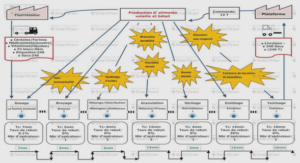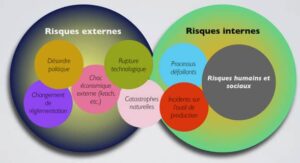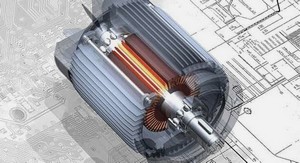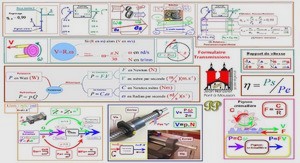Two time scale approach
In this chapter, a joint impedance controller is designed by building a joint controller upon the tendon force controller. Two different designs are presented: the first one is using the singular perturbation approach and the second one is using the cascaded approach. The singular perturbation approach relies upon the time scale difference between the tendon force controller and the link side dynamics. This assumption is similar to the one made when considering the motors as torque sources while commanding currents or voltages. In the Awiwi Hand the stiffness is modified by the internal pretension, thus modifying the time scale differences. Moreover, the assumption is only partially valid in the case of fingers since the links have a low inertia and the motors, together with the gear boxes, have larger inertias. It can be expected, and it is experimentally verified that the validity of the singular perturbation assumption depends on the mechanical stiffness. In the first case, the outer loop is considered as constant for the inner loop. The inner loop error is neglected arguing that, because of its speed, the inner loop is stabilized before the outer loop is disturbed. Despites its limitations it remains a good technique to approach the problem thanks to its intuitive structure. In the second case, namely the cascaded approach, the system is brought into a cascaded form, that is, a triangular system. The stability is obtained by explicitly considering the inner loop tracking error as a forcing term for the outer loop. However, the analysis is more complex than in the singular perturbation case. This chapter applies both methods to the case of a flexible joint, the difference being essentially visible in the stability proofs. In the first section the dynamic model is transformed into a cascaded form. Then, the tendon force controller designed in the previous chapter is augmented with some feedforward terms and their influence is experimentally verified. Next, the equations of a joint impedance controller are established by considering that a torque source is available at the joint. The next sections are establishing stability in the case of the singular perturbation approach and the cascaded approach. Finally, experimental results are presented. They highlight that increasing the internal pretension reduces the validity the singular perturbation approach.
Model Under
the assumption that the tendon force controller and the link impedance controller are working in two independent frequency domains the dynamic 137 Two time scale approach equations of a finger can be written as Bθ¨ = −E T ft (θ − q0 ) + τ m + b(θ, θ˙) , (11.1) where the link position q0 is considered to be constant w. r. t. the scale of the motor dynamics. When considering m tendons, B ∈ R m×m is a diagonal motor inertia matrix, θ ∈ R m is the vector of the motor positions, E ∈ R m×m is a diagonal matrix of the pulley radius, ft ∈ R m is the vector of the tendon forces. The electromagnetic torque is denoted τ m ∈ R m. Following the same approach, the link side equations are modified to integrate the fact that the tendon forces are the input variables. M(q)q¨+ C(q, q˙)q˙ + g(q) + b(q, q˙) = P T ft + τ ext . (11.2) When considering n links, M(q) ∈ R n×n is the link inertia matrix, q ∈ R n is the vector of the joint positions, C(q, q˙)q˙ ∈ R n is the vector of the Coriolis and centrifugal terms, P ∈ R n×m is the coupling matrix, ft ∈ R m is the vector of the tendon forces. The external torques and the vector of joint frictional torques are represented by τ ext ∈ R n and b(q, q˙) ∈ R n .
Tendon Controller Design
The control of the tendon force is realized by a PD controller with a feedforward term for the expected torque generated by the tendon force. A friction compensation term, ˆb(θ, θ˙), is added to further improve the transient response. It is structurally similar to the tendon controller with gain scheduling but the gains are constant in order to facilitate the analysis. τ m = E T ft + Kp(θdes − θ) − Kdθ˙ + ˆb(θ, θ˙) , (11.3) where θdes ∈ R m is the motor position vector that would generate the desired force vector. The friction model identified in the modeling chapter is represented by ˆb(θ, θ˙). The force tracking and motor damping gain matrices are diagonal and positive definite. They are denoted Kp ∈ R m×m and Kd ∈ R m×m. Figure 11.1a shows the simulation results obtained with and without a feedforward force component. Fig. 11.1b shows the influence of the friction compensation on the rise time of the force step response. The improvements in settling time are limited by the saturation of the control and the control delay (333µs).
Link Controller Design
The link side dynamics are designed as a regular impedance controller [78]. The link side torque input is, τ des = M(qˆ)q¨des+C(qˆ, ˙ˆq)q˙des+Kp,imp(qdes−qˆ)+Kd,imp(q˙des−˙ˆq)+ˆb(qˆ, ˙ˆq)+g(qˆ) , (11.4) 138 Tendon force [N] Time [s] 1 1.04 1.08 1.12 10 11 12 13 14 15 16 (a) Tendon force step response, without desired force feedforward and with force feedforward Tendon force [N] Time [s] 1 1.04 1.08 1.12 10 10.5 11 11.5 12 12.5 (b) Tendon force step response, with and without friction compensation Figure 11.1: Tendon force controller experiments. The green/dashed line depicts the desired tendon force. The measured tendon force is represented in red/solid (resp. in light blue/dotted) for the case with feedforward term (resp. without). where ˆ. denotes an estimated quantity, obtained by a linear observer or a filtering process (e. g. using a low pass or a Kalman filter). The joint position vector (resp. the desired joint position vector) is denoted q ∈ R n (resp. qdes ∈ R n ). The terms M(q) ∈ R n×n , C(q, q˙) ∈ R n×n and g(q) ∈ R n are the link inertia matrix, the vector of the Coriolis torques and the vector of gravity torques. The vector of frictional torques identified in the modeling section is represented by b(θ, θ˙). The impedance and damping matrices (positive definite) are denoted Kp,imp ∈ R m×m and Kd,imp ∈ R m×m. The term M(qˆ)q¨des is traditionally used to improve the tracking performance but has only little influence in the case of fingers. The desired tendon forces that are required to generate the joint torque for the impedance controller are obtained with the help of the coupling matrix pseudo-inverse.
Stability Conditions
The singular perturbation case In this section, the stability conditions are derived for the link controller and the tendon controller. Finally the stability of the closed-loop system is concluded, under the singular perturbation hypothesis. Tendon force controller In order to establish the stability conditions, the Lyapunov method is used. All tendons are assumed to be independent and therefore all matrices are simply diagonal. For the tendon force controller, the Lyapunov candidate 139 function is defined as V (θ) = 1 2 θ˙ T Bθ˙+Vk(θ)−Vk(θdes)+∂Vk ∂θ θdes (θdes−θ) T+ 1 2 (θ−θdes) TKp(θ−θdes) , (11.5) where θdes = φ −1 (ft,des) is the motor position that would result in the desired tendon force. The storage function of the spring is denoted Vk(θ) = R θ 0 f(x)dx. The Lyapunov function is composed of the kinetic energy, the spring elastic energy, and the expected energy at the equilibrium point. The time derivative is V˙ (θ) = θ˙ T Bθ¨ + θ˙ T ∂Vk ∂θ − ∂Vk ∂θ θdes θ˙ T − θ˙ TKp(θdes − θ) . (11.6) Replacing the expression of Vk, as well as the controller equations yields V˙ (θ) = θ˙ T (ft,des−Kp(θdes−θ)−Kdθ˙ +ˆb−b+ft )+θ˙ T ft−θ˙ T φ(θdes)−θ˙ TKp(θdes−θ) . (11.7) Since f des = φ(θdes): V˙ (θ) = −θ˙ T (Kdθ˙ + ˆb − b) . (11.8) As long as the viscous friction is not overestimated or at least less than the damping injected by the controller, the term (Kdθ˙ + ˆb − b) is positive, thereby ensuring that the derivative of the Lyapunov function is negative semi-definite. Finally, the global asymptotic stability is obtained by invoking the LaSalle theorem. Positive definiteness of V The terms θ˙ T Bθ˙ and (θ − θdes) TKp(θ − θdes) are positive definite due to the fact that B > 0 and Kp > 0. It remains to prove that Γ(θ) = Vk(θ)−Vk(θdes)+ ∂Vk ∂θ |θdes (θdes−θ) T is positive definite. Trivially, Γ(θdes) = 0. Γ has an extremum in θdes since ∂Γ ∂θ (θdes) = ∂Vk ∂θ (θdes) − ∂Vk ∂θ |θdes = 0. It is a minimum because ∂ 2Γ ∂θ 2 = ∂φ(θ) ∂θ > 0 because ft = φ(θ) is strictly increasing, which completes the proof. Link side controller The equations for the link side dynamics and the link side controller are M(q)q¨+ C(q˙, q)q˙ + g(q) = τ ext + τ (11.9) and τ = −Kp,imp(q −qdes)−Kd,imp(q −qdes) +g(q) + C(q˙, q)q˙des +M(q)q¨des. (11.10) The regulation problem is used to prove stability, that is, qdes = q˙ des = q¨des = 0. The two following paragraphs present two alternative proofs. 140 Lyapunov Approach Consider the Lyapunov function V (q, q˙) = 1 2 q˙ TM(q)q˙ + 1 2 q TKp,impq . (11.11) Its derivative along the solutions is V˙ (q, q˙) = q˙ TM(q)q¨+ 1 2 q˙ TM˙ (q)q˙ + q˙ TKp,impq . (11.12) Replacing the controller equation in free environment leads to V˙ (q, q˙) = q˙ T (τ − C(q˙ , q) + g(q)) + 1 2 q˙ TM˙ (q)q˙ + q˙ TKp,impq , (11.13) which is further simplified to V˙ (q, q˙) = −q˙ TKd,impq˙ . (11.14) Since Kd,imp is positive definite, the Lyapunov derivative is negative semidefinite. The global asymptotic stability is concluded by invoking the LaSalle theorem. Alternative proof By design the closed-loop dynamics of the error e = qdes − q is M(q)e¨ + Kd,impe˙ + Kp,impe = 0. (11.15) The stability is ensured by the choice of the stiffness and the damping matrices (which ought to be positive definite).
Stability Conditions
The cascaded case The previous section neglected the influence of the force controller error and established the closed-loop stability under the singular perturbation hypothesis. It is possible to explicitly take into account the tendon force error if the system is considered as a cascaded system. However, because the systems must depend on the same set of variables, the linearizing tendon force controller is used instead of the motor position controller. As a result, a differential system of equations in the variable θ is considered. The initial system, under the action of the controller is given by: Bfe¨f + Kpe˙ f + Kpef = 0 Mq¨ + Kd,imp(q˙ − qdes) + Kp,imp(q − qdes) = P T ef . (11.16) where ef = ft,des − ft is the tendon force error. To establish stability, the two decoupled system must be asymptotically stable. Moreover, the coupled system must be proved to be stable. Then, the global system is asymptotically stable. The construction of the proof is inspired by Ott [130]. The first 141 conditions are trivially obtained given that the gain matrices are positive definite. Even exponential stability is possible. The second condition, however, is more subtle. The solution consists in building a quadratic Lyapunov function for which it is possible to show that there always exists a choice of gains that ensures stability. A candidate Lyapunov function is given by V (q, q˙ , e) = 1 2 q˙ TMq˙ + 1 2 q TKp,impq + e T Ge , (11.17) where all matrices are positive definite, thus being a quadratic Lyapunov function. The derivative of the candidate along the solution of the system is V˙ (q, q˙ , e) = q˙ T (−Kd,imp(q˙ − qdes) − Kp,imp(q − qdes) + P T ef) +q TKp,impq˙ + 1 2 e˙ T Ge + 1 2 e T Ge˙ . (11.18) In the regulation case, it simplifies to V˙ (q, q˙ , e) = −q˙ TKd,impq˙ − q˙ T P T ef + e˙ T Ge , (11.19) which can be rewritten in the following matrix form by defining a state vector w = [q˙ , e, e˙]. V˙ (w) = −wTW w. (11.20) The matrix W is given by W = » Kd,imp P T /2 P /2 −G # . (11.21) According to Schur’s Lemma the matrix is positive definite if Kd,imp > 0 and Kd,imp − 1 4P T G−1P > 0. The first condition is trivially fulfilled while the second one can always be satisfied by a good choice of a positive definite G. Since G can be selected freely as being one solution of the Riccati equation, the system is globally stable. Together with the exponential stability of the subsystems, the cascaded system is globally asymptotically stable.




